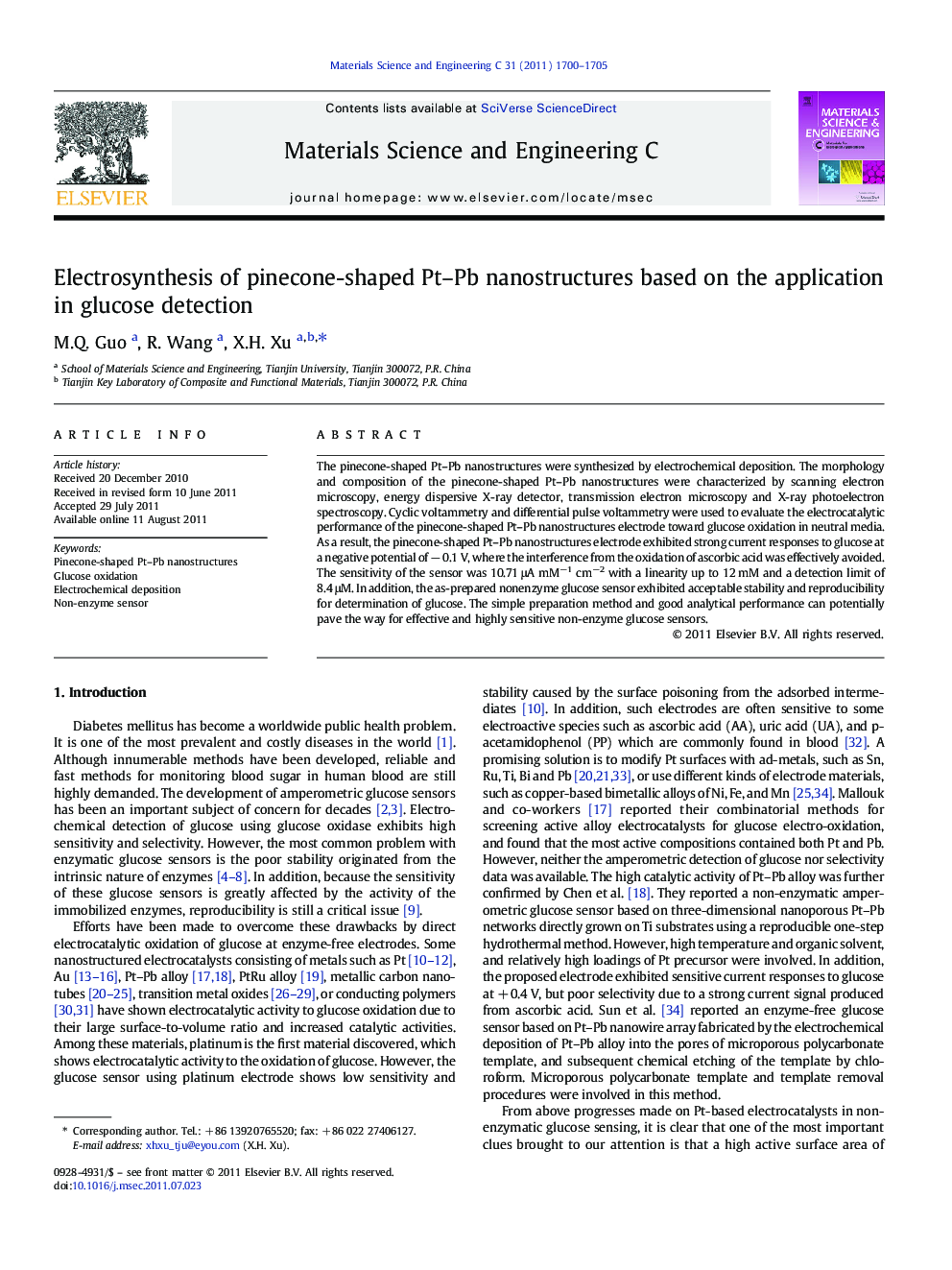| Article ID | Journal | Published Year | Pages | File Type |
|---|---|---|---|---|
| 1429820 | Materials Science and Engineering: C | 2011 | 6 Pages |
The pinecone-shaped Pt–Pb nanostructures were synthesized by electrochemical deposition. The morphology and composition of the pinecone-shaped Pt–Pb nanostructures were characterized by scanning electron microscopy, energy dispersive X-ray detector, transmission electron microscopy and X-ray photoelectron spectroscopy. Cyclic voltammetry and differential pulse voltammetry were used to evaluate the electrocatalytic performance of the pinecone-shaped Pt–Pb nanostructures electrode toward glucose oxidation in neutral media. As a result, the pinecone-shaped Pt–Pb nanostructures electrode exhibited strong current responses to glucose at a negative potential of − 0.1 V, where the interference from the oxidation of ascorbic acid was effectively avoided. The sensitivity of the sensor was 10.71 μA mM−1 cm−2 with a linearity up to 12 mM and a detection limit of 8.4 μM. In addition, the as-prepared nonenzyme glucose sensor exhibited acceptable stability and reproducibility for determination of glucose. The simple preparation method and good analytical performance can potentially pave the way for effective and highly sensitive non-enzyme glucose sensors.
► A convenient route to synthesize pinecone-shaped Pt-Pb nanostructures was developed. ► The electrode exhibited strong electrocatalytic activity to glucose. ► The sensor exhibited good analytical performance for the determination of glucose. ► Good performance and simple preparation pave the way for sensitive glucose sensors.
